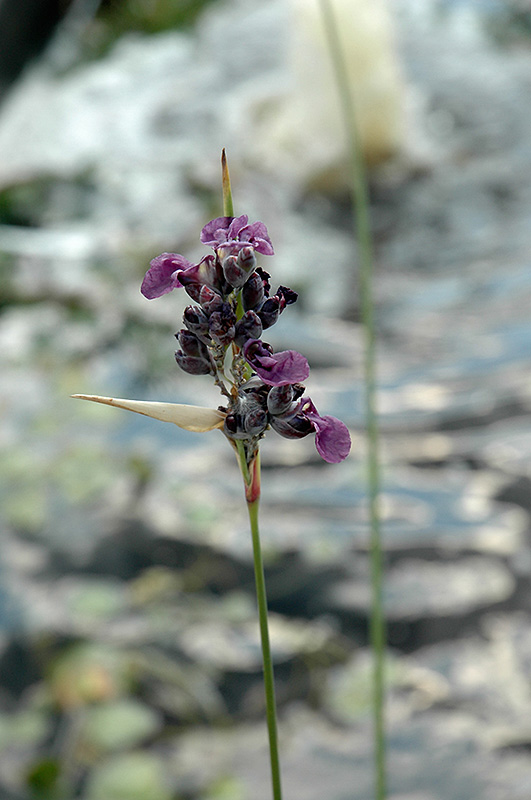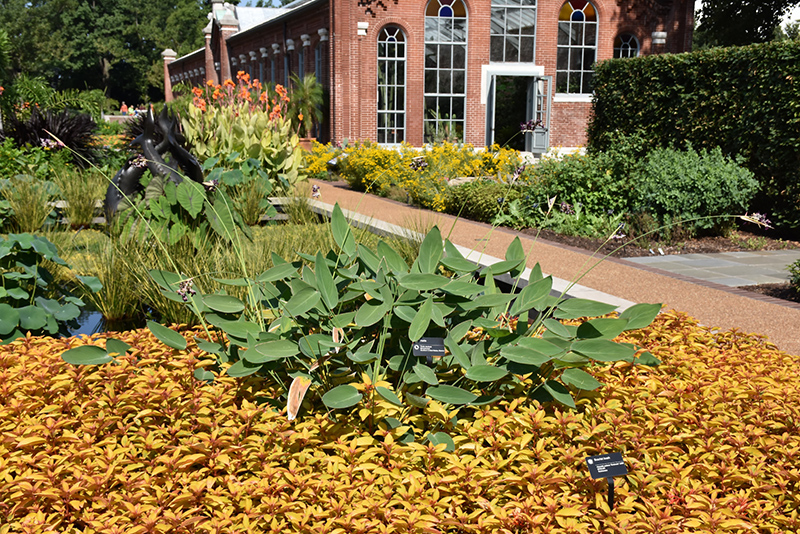Shonnard’s Nursery
Plant Finder Tool
Plant Height: 6 feet
Flower Height: 10 feet
Spread: 6 feet
Sunlight:
![]()
Hardiness Zone: 5b
Other Names: Hardy Canna, Powdery Alligator Flag
Description:
This evergreen, marginal aquatic plant forms a clump of long-stalked, erect, narrowly oval leaves covered in white powder; produces slender stems with small clusters of purple flowers in summer; great for rich, wet soils or on a pond perimeter
Ornamental Features
Powdery Thalia features dainty spikes of violet flag-like flowers at the ends of the stems in mid summer, which emerge from distinctive deep purple flower buds. Its attractive large oval leaves remain bluish-green in color with distinctive light green veins throughout the year.
Landscape Attributes
Powdery Thalia is an herbaceous evergreen perennial with an upright spreading habit of growth. Its wonderfully bold, coarse texture can be very effective in a balanced garden composition.
This plant will require occasional maintenance and upkeep, and should be cut back in late fall in preparation for winter. It is a good choice for attracting bees and butterflies to your yard. It has no significant negative characteristics.
Powdery Thalia is ideally suited for growing in a pond, water garden or patio water container, and is recommended for the following landscape applications;
- Mass Planting
- General Garden Use
- Water Gardens
- Bog Gardens
Planting & Growing
Powdery Thalia will grow to be about 6 feet tall at maturity extending to 10 feet tall with the flowers, with a spread of 6 feet. It has a low canopy with a typical clearance of 1 foot from the water. It grows at a fast rate, and under ideal conditions can be expected to live for approximately 10 years. As an evegreen perennial, this plant will typically keep its form and foliage year-round.
This plant should only be grown in full sunlight. As an aquatic plant, it requires a suitable water garden environment and will benefit from special planting and ongoing care practices; consult one of our in-store experts for further details and instructions. It is not particular as to soil pH, but grows best in rich soils. It is somewhat tolerant of urban pollution. Consider applying a thick mulch around the root zone in winter to protect it in exposed locations or colder microclimates. This species is native to parts of North America. It can be propagated by division.


